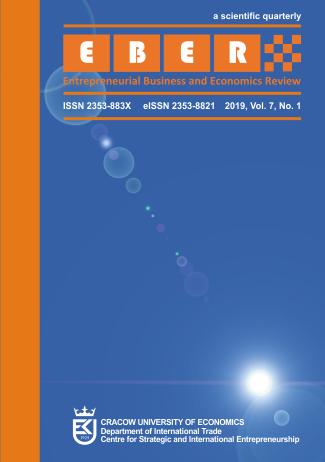Cluster Analysis of Per Capita Gross Domestic Products
Cluster Analysis of Per Capita Gross Domestic Products
Author(s): Michael C. ThrunSubject(s): Economy, National Economy, Methodology and research technology
Published by: Uniwersytet Ekonomiczny w Krakowie
Keywords: machine learning; cluster analysis; swarm intelligence; visualisation, self-organisation; gross domestic product;
Summary/Abstract: Objective: The purpose of this article is to show the value of exploratory data analysis performed on the multivariate time series dataset of gross domestic products per capita (GDP) of 160 countries for the years 1970-2010. New knowledge can be derived by applying cluster analysis to the time series of GDP to show how patterns in GDP can be explained in a data-driven way. Research Design & Methods: Patterns characterised by distance and density based structures were found in a topographic map by using dynamic time warping distances with the Databionic swarm (DBS) 1. The topographic map represents a 3D landscape of data structures. Looking at the topographic map, the number of clusters was derived. Then, a DBS clustering was performed and the quality of the clustering was verified. Findings: Two clusters are identified in the topographic map. The rules deduced from classification and regression tree (CART) show that the clusters are defined by an event occurring in 2001 at which time the world economy was experiencing its first synchronised global recession in a quarter-century. Geographically, the first cluster mostly of African and Asian countries and the second cluster consists mostly of European and American countries. Implications & Recommendations: DBS can be used even by non-professionals in the field of data mining and knowledge discovery. DBS is the first swarm-based clustering technique that shows emergent properties while exploiting concepts of swarm intelligence, self-organisation, and game theory. Contribution & Value Added: To the knowledge of the author it is the first time that worldwide similarities between 160 countries in GDP time series for the years 1970- 2010 have been investigated in a topical context.
Journal: Entrepreneurial Business and Economics Review
- Issue Year: 7/2019
- Issue No: 1
- Page Range: 217-231
- Page Count: 15
- Language: English

